-
 Bitcoin
Bitcoin $104,148.1020
0.97% -
 Ethereum
Ethereum $2,569.2582
-1.03% -
 Tether USDt
Tether USDt $1.0002
0.00% -
 XRP
XRP $2.3939
-5.57% -
 BNB
BNB $656.8687
1.23% -
 Solana
Solana $172.6118
-1.91% -
 USDC
USDC $0.9999
0.00% -
 Dogecoin
Dogecoin $0.2248
-3.80% -
 Cardano
Cardano $0.7776
-1.95% -
 TRON
TRON $0.2743
-0.01% -
 Sui
Sui $3.9279
1.41% -
 Chainlink
Chainlink $16.2350
-4.05% -
 Avalanche
Avalanche $23.8177
-3.16% -
 Stellar
Stellar $0.2947
-2.86% -
 Hyperliquid
Hyperliquid $26.8668
7.59% -
 Shiba Inu
Shiba Inu $0.0...01506
-3.38% -
 Hedera
Hedera $0.1997
-2.35% -
 UNUS SED LEO
UNUS SED LEO $8.8410
-0.56% -
 Bitcoin Cash
Bitcoin Cash $402.6436
0.39% -
 Toncoin
Toncoin $3.1020
-4.42% -
 Polkadot
Polkadot $4.8484
-1.65% -
 Litecoin
Litecoin $100.5217
-0.05% -
 Monero
Monero $338.5138
-0.81% -
 Pi
Pi $0.8650
1.26% -
 Bitget Token
Bitget Token $4.9654
4.61% -
 Pepe
Pepe $0.0...01334
-2.21% -
 Dai
Dai $0.9999
0.01% -
 Ethena USDe
Ethena USDe $1.0004
-0.03% -
 Uniswap
Uniswap $6.3016
-5.73% -
 Bittensor
Bittensor $440.7961
-3.46%
Is XMR mining suitable for home computers, will long-term operation damage the hardware?
XMR mining on home computers is feasible but long-term operation may damage hardware due to increased heat and wear; monitor temperatures and consider mining schedules to mitigate risks.
May 06, 2025 at 11:29 am

Is XMR mining suitable for home computers, will long-term operation damage the hardware?
Mining Monero (XMR) has become an attractive option for many cryptocurrency enthusiasts due to its privacy features and the ability to mine it with a regular home computer. However, potential miners often wonder if their hardware can handle the stress of long-term mining operations and whether it might cause damage. In this article, we will delve into the suitability of home computers for XMR mining and discuss the potential risks to hardware when mining for extended periods.
Understanding XMR Mining on Home Computers
Monero uses the CryptoNight algorithm, which is designed to be ASIC-resistant and more accessible to CPU and GPU mining. This makes it particularly appealing for home computer users who do not have access to specialized mining equipment.
The basic requirements for mining XMR on a home computer include:
- A CPU or GPU that supports the CryptoNight algorithm.
- Sufficient RAM to handle mining software.
- A stable internet connection to connect to the mining pool.
- Mining software compatible with Monero, such as XMRig or MoneroSpv.
Setting Up XMR Mining on Your Home Computer
To start mining XMR on your home computer, follow these steps:
- Download and Install Mining Software: Choose a reliable mining software such as XMRig. Visit the official website, download the latest version suitable for your operating system, and follow the installation instructions.
- Configure the Mining Software: Open the configuration file of the mining software. You will need to enter your Monero wallet address, choose a mining pool, and set the appropriate mining settings. For example, in XMRig, you might need to edit the
config.jsonfile to include your pool URL, username (which is typically your wallet address), and password. - Start Mining: After configuration, launch the mining software. It will connect to the specified mining pool and begin mining XMR using your computer's CPU or GPU.
Performance and Efficiency of Home Computers in XMR Mining
The performance of a home computer in mining XMR largely depends on the hardware specifications. A powerful CPU or GPU can significantly increase the hash rate and, consequently, the amount of XMR mined. However, even with high-end hardware, the efficiency of home computers compared to specialized mining rigs is lower.
Factors affecting the efficiency of home computers include:
- CPU/GPU Specifications: Higher-end CPUs and GPUs will yield better performance but consume more power.
- Cooling Systems: Efficient cooling is crucial to maintain performance and prevent hardware damage.
- Power Consumption: Home computers generally have higher power consumption per hash rate compared to ASICs.
Potential Risks to Hardware from Long-Term XMR Mining
Long-term mining operations can indeed pose risks to your home computer's hardware. The primary concerns include:
- Increased Heat Generation: Mining puts a significant load on the CPU and GPU, causing them to generate more heat. Prolonged exposure to high temperatures can lead to thermal throttling or, worse, permanent damage to the components.
- Wear and Tear: Continuous operation at high loads accelerates the wear and tear of hardware components, potentially shortening their lifespan.
- Power Supply Strain: Mining requires a stable power supply, and if your power supply unit (PSU) is not up to the task, it might fail, leading to hardware damage.
To mitigate these risks, consider the following precautions:
- Monitor Temperatures: Use software like HWMonitor to keep an eye on your CPU and GPU temperatures. Ensure they stay within safe limits.
- Improve Cooling: Enhance your computer's cooling system with additional fans or liquid cooling solutions to manage heat more effectively.
- Regular Maintenance: Clean dust from your computer regularly to prevent overheating and ensure all components are functioning correctly.
- Upgrade Power Supply: If necessary, invest in a higher-wattage PSU to handle the increased power demands of mining.
Balancing Profitability and Hardware Longevity
While mining XMR on a home computer can be profitable, it's essential to balance the potential earnings with the risk of hardware damage. Consider the following tips to maximize profitability while minimizing risks:
- Calculate Costs: Factor in the electricity costs and the potential depreciation of your hardware when calculating profitability.
- Set Mining Schedules: Instead of running your computer 24/7, consider setting specific mining schedules to give your hardware periodic breaks.
- Monitor Performance: Regularly check your mining software's performance metrics to ensure it's running efficiently and not causing undue stress on your hardware.
Frequently Asked Questions
Q: Can I use an old computer for XMR mining?
A: Yes, you can use an old computer for XMR mining, but the efficiency and profitability will depend on the hardware specifications. Older CPUs and GPUs may not yield significant hash rates, and the power consumption might outweigh the earnings.
Q: Is it possible to mine XMR on a laptop?
A: While technically possible, mining XMR on a laptop is not recommended due to the high heat generation and potential for damaging the laptop's components. Laptops are not designed for continuous high-load operations.
Q: How can I tell if my hardware is being damaged by mining?
A: Signs of hardware damage from mining include increased temperatures, unexpected shutdowns, performance degradation, and unusual noises from the fans or other components. Regular monitoring and maintenance can help identify issues early.
Q: Can I switch between CPU and GPU mining for XMR on the same computer?
A: Yes, many mining software solutions, such as XMRig, allow you to switch between CPU and GPU mining. You can configure the software to use either or both, depending on your hardware capabilities and preferences.
Disclaimer:info@kdj.com
The information provided is not trading advice. kdj.com does not assume any responsibility for any investments made based on the information provided in this article. Cryptocurrencies are highly volatile and it is highly recommended that you invest with caution after thorough research!
If you believe that the content used on this website infringes your copyright, please contact us immediately (info@kdj.com) and we will delete it promptly.
- Aerodrome Finance Launches Slipstream LP Rewards Program, Targeting Base Network Liquidity Providers
- 2025-05-16 11:00:32
- US Congress Democrats introduce resolutions to block three arms sales to the UAE
- 2025-05-16 11:00:32
- Cryptocurrency markets remain volatile amid recent regulatory shifts and institutional interest surges
- 2025-05-16 10:55:16
- Renewed Demand And Key Resistance Define Next Move
- 2025-05-16 10:55:16
- Eric Trump Discusses His Hopes for Digital Assets and His New Company, American Bitcoin
- 2025-05-16 10:50:14
- Celestia (TIA) Tests Critical Support Level Near $2.72 as Cryptocurrency Market Continues to Recalibrate
- 2025-05-16 10:50:14
Related knowledge
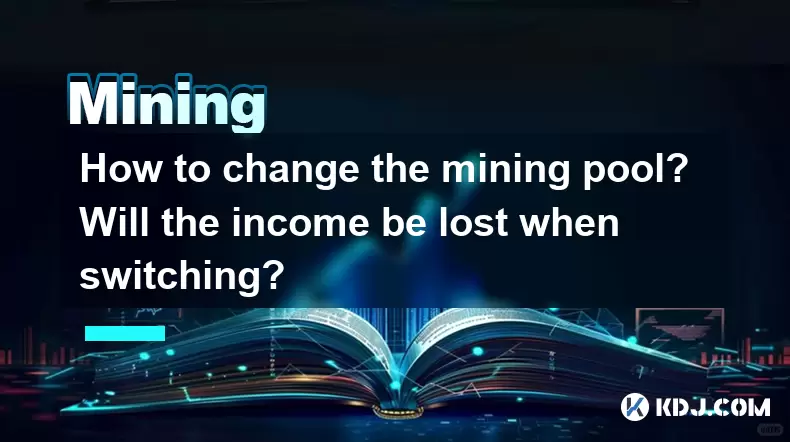
How to change the mining pool? Will the income be lost when switching?
May 16,2025 at 01:50am
Changing your mining pool can be a strategic move to optimize your mining operations. Whether you're looking to switch due to better pool fees, more reliable payouts, or other reasons, it's important to understand the process and its implications on your mining income. In this article, we'll guide you through the steps to change your mining pool and dis...
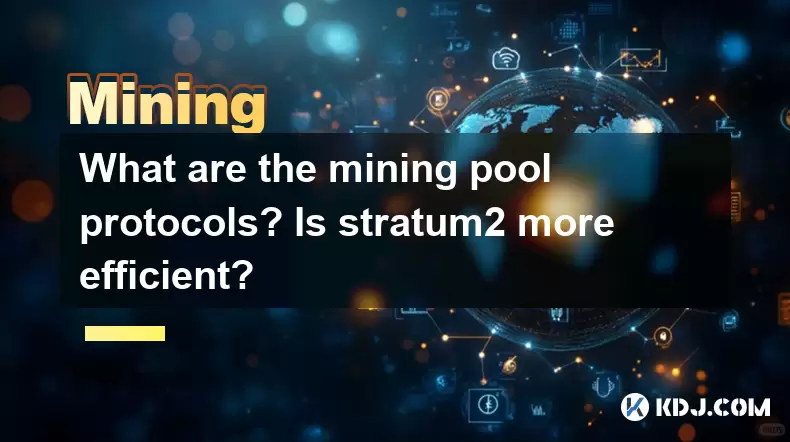
What are the mining pool protocols? Is stratum2 more efficient?
May 15,2025 at 03:35pm
Mining pool protocols are essential components of cryptocurrency mining operations, allowing miners to work together and share resources to increase their chances of earning rewards. The most commonly used protocols include Stratum, Stratum V2 (also known as Stratum2), and Getwork. Each protocol has its own set of features and efficiencies, which can si...
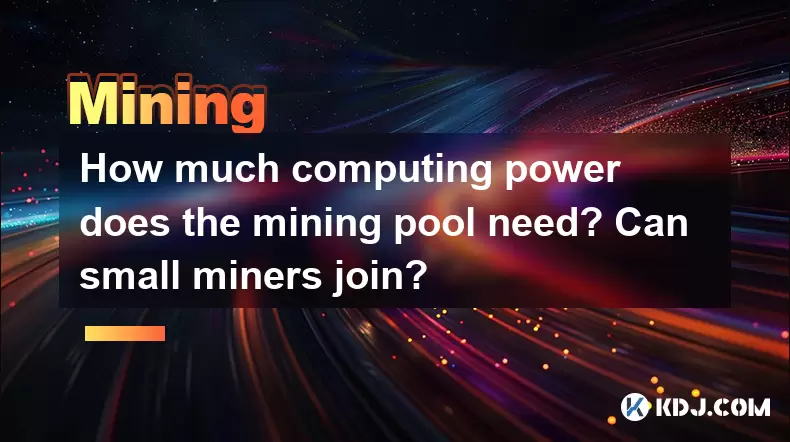
How much computing power does the mining pool need? Can small miners join?
May 15,2025 at 07:29pm
The world of cryptocurrency mining is both fascinating and complex, with mining pools playing a crucial role in the ecosystem. One of the most common questions that arise is: How much computing power does a mining pool need? Additionally, many small miners wonder if they can join these pools. Let's delve into these topics in detail. Understanding Mining...
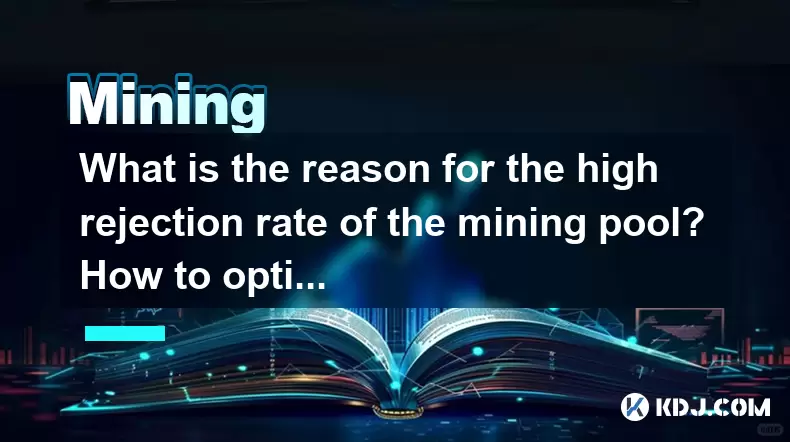
What is the reason for the high rejection rate of the mining pool? How to optimize?
May 15,2025 at 11:35am
The high rejection rate of a mining pool is a common concern for many cryptocurrency miners. Rejection rates refer to the percentage of submitted shares that are rejected by the mining pool. A high rejection rate can significantly impact a miner's profitability and efficiency. In this article, we will explore the reasons behind high rejection rates and ...
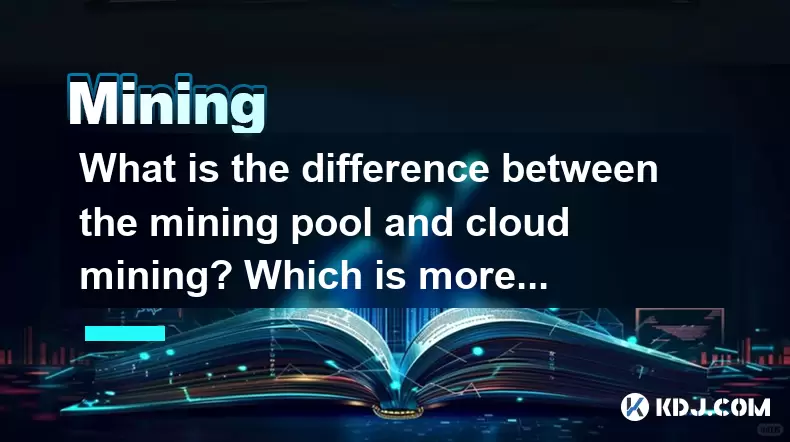
What is the difference between the mining pool and cloud mining? Which is more suitable for novices?
May 14,2025 at 08:56pm
Mining in the cryptocurrency world refers to the process of verifying transactions and adding them to the blockchain, which in turn releases new coins as a reward. Two popular methods of participating in this process are through mining pools and cloud mining. Both have their own set of characteristics, advantages, and disadvantages. This article aims to...
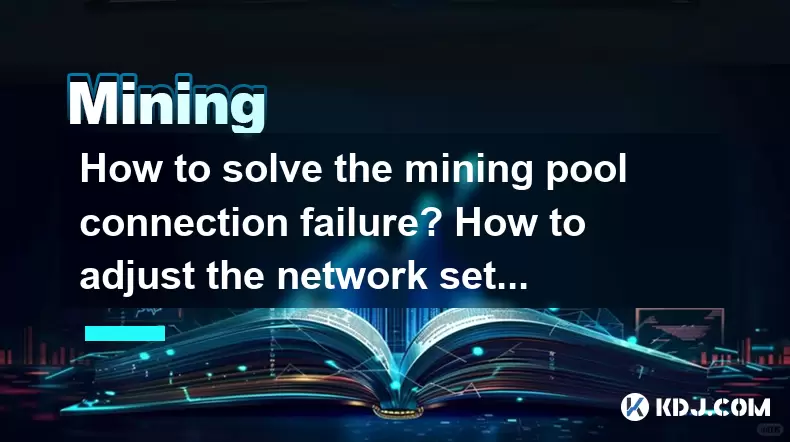
How to solve the mining pool connection failure? How to adjust the network settings?
May 16,2025 at 06:21am
Introduction to Mining Pool Connection FailureMining pool connection failures can be a frustrating issue for cryptocurrency miners. These failures can occur due to various reasons such as network issues, incorrect settings, or problems with the mining pool itself. Understanding how to diagnose and resolve these issues is crucial for maintaining a stable...

How to change the mining pool? Will the income be lost when switching?
May 16,2025 at 01:50am
Changing your mining pool can be a strategic move to optimize your mining operations. Whether you're looking to switch due to better pool fees, more reliable payouts, or other reasons, it's important to understand the process and its implications on your mining income. In this article, we'll guide you through the steps to change your mining pool and dis...

What are the mining pool protocols? Is stratum2 more efficient?
May 15,2025 at 03:35pm
Mining pool protocols are essential components of cryptocurrency mining operations, allowing miners to work together and share resources to increase their chances of earning rewards. The most commonly used protocols include Stratum, Stratum V2 (also known as Stratum2), and Getwork. Each protocol has its own set of features and efficiencies, which can si...

How much computing power does the mining pool need? Can small miners join?
May 15,2025 at 07:29pm
The world of cryptocurrency mining is both fascinating and complex, with mining pools playing a crucial role in the ecosystem. One of the most common questions that arise is: How much computing power does a mining pool need? Additionally, many small miners wonder if they can join these pools. Let's delve into these topics in detail. Understanding Mining...

What is the reason for the high rejection rate of the mining pool? How to optimize?
May 15,2025 at 11:35am
The high rejection rate of a mining pool is a common concern for many cryptocurrency miners. Rejection rates refer to the percentage of submitted shares that are rejected by the mining pool. A high rejection rate can significantly impact a miner's profitability and efficiency. In this article, we will explore the reasons behind high rejection rates and ...

What is the difference between the mining pool and cloud mining? Which is more suitable for novices?
May 14,2025 at 08:56pm
Mining in the cryptocurrency world refers to the process of verifying transactions and adding them to the blockchain, which in turn releases new coins as a reward. Two popular methods of participating in this process are through mining pools and cloud mining. Both have their own set of characteristics, advantages, and disadvantages. This article aims to...

How to solve the mining pool connection failure? How to adjust the network settings?
May 16,2025 at 06:21am
Introduction to Mining Pool Connection FailureMining pool connection failures can be a frustrating issue for cryptocurrency miners. These failures can occur due to various reasons such as network issues, incorrect settings, or problems with the mining pool itself. Understanding how to diagnose and resolve these issues is crucial for maintaining a stable...
See all articles























































































